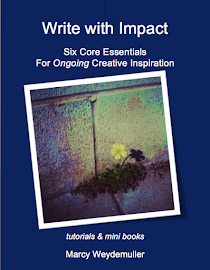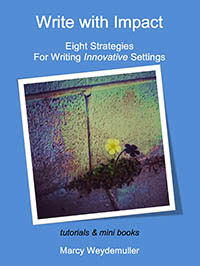Thursday, January 26, 2017
Overview Plot Development: Patterns Part Five: The Story of Misunderstanding, Discovery, and Reversal
Workshop: An Introduction to Writing for Children and Young Adults
“No dogs,” the preacher said.
“We’ve talked about this before. You don’t need a dog.”
“I know it,” I said. “I know I
don’t need a dog. But this dog needs me. Look,” I said. I went to the trailer
door and I hollered, “Winn-Dixie!”
Excerpt from Because of Winn-Dixie, by Kate DiCamillo
Both India
Opal Buloni and her preacher Daddy were wrong. They both needed the big,
skinny, ugly stray dog she found in the grocery store.
Right at the beginning the surface
Misunderstanding is clear. What is not clear is the underlying needs they both
were holding onto, especially emotionally and spiritually.
Fitz—Randolph says, “We all misunderstand people, situations,
motives, ourselves; we often discover
our mistake and reverse our erroneous
thinking and course of action.”
In this pattern the misunderstanding must be
genuine and nothing can talk him out of it. Only through experience can the
truth come to light. The mind attitude is changed by the heart action through
action. And once the main character discovers the truth he must to do something
as a result. The reverse of thinking changes a course of action.
In Treasure
Island by Robert Louis Stevenson, young Jim Hawkins is convinced the cook,
Long John Silver is a friend, until he hears him planning the mutiny. Then they
become enemies. Yet at the end Long John saves Jim’s life—another reversal.
Long John is a thief, but he does not want Jim to die.
How would the well-known Cinderella story change
if in fact the stepmother was trying to protect her, or the big bad wolf
attempted to protect the three little pigs?
Action Steps:
1.
Make
a list of mistaken ideas you have personally had over the past few years about
a situation or a person or a motive or yourself.
2.
Choose
one of them for your main character to react to a major or minor character. How
does it change your plot?
3.
Go
back to one of our previous exercises where you made a list of attitudes for
your character. Reverse half of them. How does the tone of your story change?
Share: Did any surprise you?
Read deep, marcy
Thursday, January 19, 2017
Overview Plot Development: Patterns Part Four: Wish Fulfillment Story
Workshop: An Introduction to Writing for Children and Young Adults
“Strong motives make for strong
convincing stories and weak motives make for weak and unconvincing tales.” Lee Wyndham
Strong motives
are especially important for the Wish Fulfillment story as often the hero or
heroine does not actively participate in the success as energetically as some
other patterns. In fact, in some instances at first glance the main character,
often quiet, may seem passive.
In a Wish Fulfillment “the wish seems so impossible to him or her that he/she almost never
makes any effort to come true,” according to Fitz—Randolph.
Many fairy tales use the two types of Wish
Fulfillment across many cultures. A wish almost always touches hearts,
especially if the reader can identify with the emotion. Lee Wyndham notes that
there are three powerful urges that apply to all ages: life urge, love, and
power urge. Once again usually one or all can often be identified in fairy
tales and folk tales.
In the first type, the main character gets
his wish because of who he is—his character shines through whatever
circumstance he finds himself. Cinderella
fits the first type. She does not get to the ball by her own actions, but
because of her personality and generous heart towards others. One caution
though is to let the story unfold without adding any “moralist preachiness.” It
is not grounded on outer behavior but on heart concerns.
The second type of wish type is similar in
the quality of unselfishness and personal character but they do participate
more in the unfolding action. Not, however, because they expect a reward but
because it is the right thing to do regardless of the consequences. They act
with no thought of getting their wish. An example of this is in The Golden Goose by Grimm Brothers. The
third brother is given a poor meal and is asked by a little old man if he will
share it. The young man does and warns him of its poor quality. Not only does
the meal become delicious but good fortune follows the next stage of his
journey with a happy ending. All because the young brother acted in honesty and
generosity, unlike his self-centered older brothers.
“Wishes
always need to be a strong one and think of what a child wants.” Now.
A more modern version of this quote, and an
excellent wish fulfillment story style, is in Found Things, by Marilyn Hilton. In this exquisitely written novel
the reader is thoroughly attached to River Rose Bryne where “Wishes are powerful things.”
Action Steps:
Below are five
fundamental basic human needs listed by Lee Wyndham, which she says offer “a powerful magnet for holding the readers’
interest.” Choose one of them and apply it to the pattern you chose from
last week. Or which would you choose for a Wish Fulfillment pattern?
1.
“The
need to love and be loved.
2.
The
need to belong.
3.
The
need to achieve.
4.
The
need for security—material, emotional, spiritual.
5.
The
need to know.”
Share: Which one did you chose? Why did
that one jump out to you?
Read deep, marcy
Saturday, January 14, 2017
Welcome to the White Stone Series
Light That Fractures is released.
J
Still
struggling with months of grief, Geena Morisi resolves to begin the New Year
with hope instead of holding onto her anger. When an unexpected windfall
arrives, she has to choose whether relinquishing her desire for justice betrays
her twin sister’s memory or honors her life. Geena wavers back and forth
between past and present trying to decide which path to take. Can she return to
her art studies, manage her day care job, and raise her orphaned niece only on
her own terms? Her decision will have repercussions to change not just her
life, but Ana’s too.
White Stones Series: Hope, Faith, Heart
Six
young women face life transitions that create tense relationships and struggles
of faith. Will they have the courage to challenge their personal fears and
experience new beginnings that stretch their hearts into hope?
Labels:
E-Book,
Faith,
Heart,
Hope,
Inspirational,
Light That Fractures,
White Stone Series,
Women's Contemporary Fiction
Thursday, January 12, 2017
Overview Plot Development: Patterns Part Three: Story of Purpose
Workshop: An Introduction to Writing for Children and Young Adults
“It must be something he or she
will be willing to fight for with tremendous drive and force.” Lee Wyndham
A sense of
purpose achieved is often seen in short stories where a character has a problem
or purpose and must chose what to do about it. And it works equally well for a developed
novel when the problem creates several twists and turns.
Often the
problem can be stated as a question, which then makes the solution to the
answer. The problem must be valid and within the possible achievement of the
main character. Then the plot evolves from the situations and the characters.
The solutions are achieved by one, or all, of three means: courage, ingenuity
and special capacity.
In the engaging 1880’s
historical, The Adventures of Pearley
Monroe by Marci Seither, twelve-year-old Pearley faces a variety of
problems including a jewel thief, a mining explosion, and a bear. One special capacity, when he
encounters the bear, is his knowledge and experience so that he can save
himself and his little sister. If his sister had been the main character then
her being little could have been the key to a solution to save them. Or the
fact that she was a very fast runner.
Definition of Purpose achievement: situation
+problem +solution=synopsis. The Character has to keep struggling right up to
the end. The Climax is the answer.
This pattern works well in all genres. Here
are a few more examples to explore.
Realistic: Jacob Have I Loved, YA, by Katherine Paterson (courage and
ingenuity).
Mystery: The 101 Dalmatians, ages 8-12), by
Dodie Smith, (courage and ingenuity).
Quest: The
Hero and the Crown, The Blue Sword,
ages 11-YA, by Patricia McKillip (courage and ingenuity and special capacity).
Jane Fitz-Randolph recommends answering each
of these questions before you write a Story of Purpose Achieved pattern.
“What
does my character want?
What
prevents him from getting it?
What
does he immediately do about it?
What
happens because of what he does?
What
Black Moment does all this lead to? (This is the crisis)
What,
finally, does he do to achieve his purpose? (This is the climax)”
Action Steps:
1.
Go
to the library and choose a variety of magazines in different age groups. Skim
read through the short stories, and see how many fall into the purpose
category.
2.
Choose
the plot line that held the most interest and adapt the pattern to one of your
own story ideas.
Share: What did you decide your character
wants?
Read deep, marcy
Thursday, January 5, 2017
Overview Plot Development: Patterns Part Two: Incident Story
Workshop: An Introduction to Writing for Children and Young Adults
“The surface story is the one in which the
action occurs, the one where the suspense is, the one that keeps the reader
reading to find out what happens.”
Jane
Fitz—Randolph
In her book, How to Write for Children and Young Adults,
Jane Fitz—Randolph notes five plot structures that work well for these ages.
Incident Story
Technically according to the definitions
we’ve looked at the incident story is not a plotted story but it works well for
the very young and their perception of plot in that it captures their
attention. The main character becomes interested in what happens around him and
responds. A good example would be the classic Good Night Moon where a sleepy child notices her environment. These
stories are usually quite short, about 300 to 700 words.
In an Incident Excursion the environment is
more or less familiar, such as a trip to the grocery store, or a walk in the
park. Each incident or encounter becomes more interesting.
“When we reach our favorite
spot Mr. Squirrel
waits on his branch just for me.
We say hello.
First he somersaults, then runs
fast upside down
leaps up trunk, twirls down again.
We laugh, we clap.
He flourishes fluffy tail
then takes a bow.” Excerpt from A Walk in the
Park (not yet published)
In an Incident Adventure the situation is
unfamiliar. Fitz—Randoph reminds us to “remember
adventure from the very young child’s pov”. The very popular “Where the Wild Things Are” by Maurice
Sendak definitely takes our hero on an adventure.
But for the very young an unfamiliar
situation can be as ordinary as a fire truck hosing down a fire or watching a
puppy given a bath for the first time.
Incident stories still must have an
interesting sequence of events that build to a climax and both must have unity.
Look for ways to us repetition, rhythm, and rhyme when appropriate to the
story. In the story “Alexander and the
Terrible, Horrible, No Good, Very Bad Day” by Judith Viorst, the terrible,
horrible, very bad day phrase is repeated throughout each frustrating incident that
he encounters.
For this story style the more specific and
concrete the better.
“Paint word pictures that help the child to
visualize.”
Jane
Fitz—Randolph
Action Steps: (Suggestions taken from Jane Fitz-Randolph)
Begin to practice tracking plot patterns for
different ages and genres. For every story you read look for the plot patterns.
1.
State the story in one sentence.
Then write a brief synopsis.
2.
Make specific note re the
Beginning: Time, Setting, Principle characters. Include the Set up situation or
problem.
3.
As you read mark the Middle: continuing
scenes/action/plot.
4.
End: climax/resolution.
Share: Did anything surprise you? Why?
Read deep, marcy
Subscribe to:
Posts (Atom)








